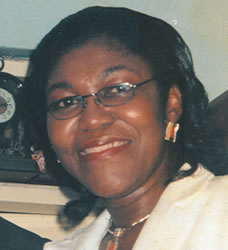


Posted by By PATRICK ASONYE & AGAPTUS ANAELE on



Heart attack and stroke are life-and-death emergencies - every second counts. Not all these signs occur in every heart attack or stroke. Sometimes they go away and return. If some occur, get help fast! Today heart attack and stroke victims can benefit from new medications and treatments unavailable to patients in years past.
Heart attack and stroke are life-and-death emergencies - every second counts. Not all these signs occur in every heart attack or stroke. Sometimes they go away and return. If some occur, get help fast! Today heart attack and stroke victims can benefit from new medications and treatments unavailable to patients in years past.
For example, clot-busting drugs can stop some heart attacks and strokes in progress, reducing disability and saving lives. But to be effective, these drugs must be given relatively quickly after heart attack or stroke symptoms first appear.
Heart attack warning signs
Some heart attacks are sudden and intense the "movie heart attack," where no one doubts what's happening. But most heart attacks start slowly, with mild pain or discomfort. Often people affected aren't sure what's wrong and wait too long before getting help. Here are signs that can mean a heart attack is happening: Most heart attacks involve discomfort in the center of the chest that lasts more than a few minutes, or that goes away and comes back. It can feel like uncomfortable pressure, squeezing, fullness or pain. Symptoms can include pain or discomfort in
Other signs may include breaking out in a cold sweat, nausea or lightheadedness.
As with men, women's most common heart attack symptom is chest pain or discomfort. But women are somewhat more likely than men to experience some of the other common symptoms, particularly shortness of breath, nausea/vomiting, and back or jaw pain.
Stroke warning signs
Sudden numbness or weakness of the face, arm or leg, especially on one side of the body. Sudden confusion, trouble speaking or understanding.
Sudden trouble seeing in one or both eyes. Sudden trouble walking, dizziness, loss of balance or coordination. Sudden, severe headache with no known cause.
If you or someone with you has one or more of these signs, don't delay! It's very important to take immediate action. If given within three hours of the start of symptoms, a clot-busting drug called tissue plasminogen activator (tPA) can reduce long-term disability for the most common type of stroke.
...Diagnosis and treatment
Cardiac arrest is an abrupt cessation of pump function. It is evidenced by absence of a palpable pulse of the heart. But with prompt intervention,the condition could be reversed, but without it will lead to death.
However, due to inadequate cerebral perfusion, the patient will be unconscious and will have stopped breathing. The main diagnostic criterion to diagnose a cardiac arrest (as opposed to respiratory arrest, which shares many of the same features) is lack of circulation. However, there are a number of ways of determining this.
In many cases, lack of carotid pulse is the gold standard for diagnosing cardiac arrest, but lack of a pulse (particularly in the peripheral pulses) may be a result of other conditions (e.g. shock), or simply an error on the part of the rescuer. Studies have shown that rescuers often make a mistake when checking the carotid pulse in an emergency, whether they are healthcare professionals or lay persons
Owing to the inaccuracy in this method of diagnosis, some bodies such as the European Resuscitation Council (ERC) have de-emphasised its importance. The Resuscitation Council (UK), in line with the ERC's recommendations and those of the American Heart Association, have suggested that the technique should be used only by healthcare professionals with specific training and expertise, and even then that it should be viewed in conjunction with other indicators such as agonal respiration.
Various other methods for detecting circulation have been proposed. Guidelines following the 2000 International Liaison Committee on Resusciation (ILCOR) recommendations were for rescuers to look for "signs of circulation", but not specifically the pulse]. These signs included coughing, gasping, colour, twitching and movement.] However, in face of evidence that these guidelines were ineffective, the current recommendation of ILCOR is that cardiac arrest should be diagnosed in all casualties who are unconscious and not breathing normally.]
Following initial diagnosis of cardiac arrest, healthcare professionals further categorise the diagnosis based on the ECG/EKG rhythm. There are 4 rhythms which result in a cardiac arrest. Ventricular fibrillation and pulseless ventricular tachycardia are both responsive to a defibrillator and so are colloquially referred to as "shockable" rhythms, whereas asystole and pulseless electrical activity are non-shockable. The nature of presenting hearth rhythm suggests different causes and treatment, and is used to guide the rescuer as to what treatment may be appropriate.
Prevention
With positive outcomes following cardiac arrest so unlikely, a great deal of effort has been spent in finding effective strategies to prevent cardiac arrest.
As noted above, one of the prime causes of cardiac arrest outside of hospital is ischemic heart disease. Vast resources have been put into trying to reduce cardiovascular risks across much of the developed world. In particular schemes have been put in place to promote a healthy diet and exercise. For people considered to be particularly at risk of heart disease, measures such as blood pressure control, prescription of cholesterol lowering medications, and other medico-therapeutic interventions, have been widely used. A magnesium deficiency, or lower levels of magnesium, can contribute to heart disease and a healthy diet that contains adequate magnesium may help prevent heart disease. Magnesium can be used to enhance long-term treatment, so it may be effective in long term prevention.

